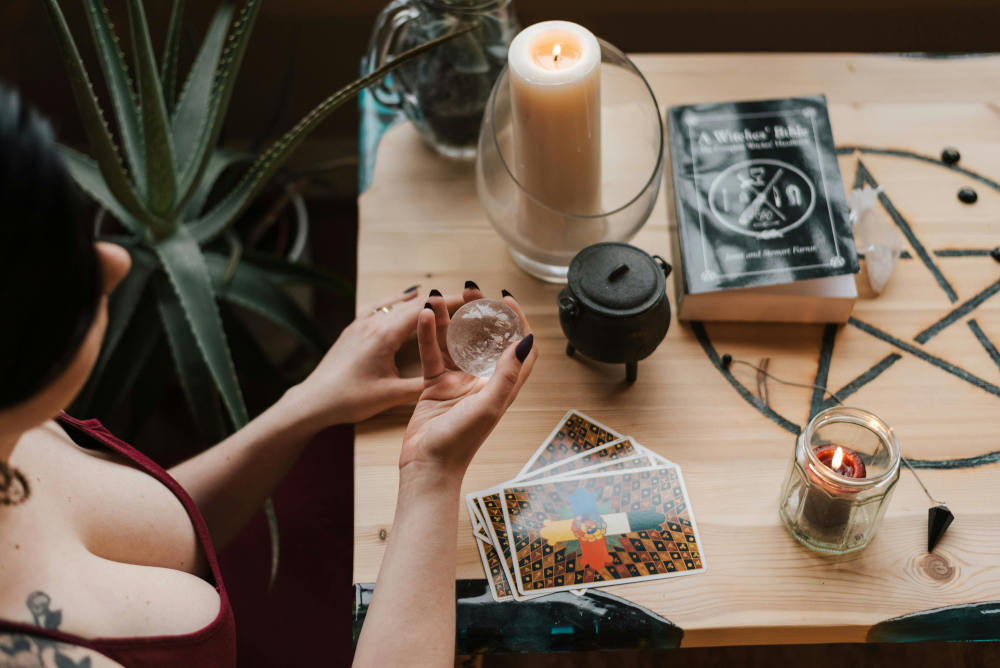
Cultiver des herbes aromatiques en pots est une façon pratique et enrichissante de cultiver des saveurs fraîches à la maison. Que vous ayez un rebord de fenêtre ensoleillé, un balcon ou une terrasse, la culture en pots vous permet d'accéder facilement à du basilic, du romarin, de la menthe ou du thym frais au moment opportun. Mais la réussite ne dépend pas seulement du soleil et de l'eau : elle commence par un sol adapté .
Dans ce guide, nous explorerons le meilleur sol pour les herbes en pots , les ingrédients à rechercher, les erreurs courantes à éviter et comment préparer votre propre terreau adapté aux herbes.
Panaprium est indépendant et pris en charge par les lecteurs. Si vous achetez quelque chose via notre lien, nous pouvons gagner une commission. Si vous le pouvez, veuillez nous soutenir sur une base mensuelle. La mise en place prend moins d'une minute et vous aurez un impact important chaque mois. Merci!
Pourquoi le sol est important pour les herbes en pot
Contrairement aux herbes aromatiques cultivées en pleine terre, les herbes aromatiques en pot dépendent entièrement du sol que vous leur fournissez . Ce sol doit favoriser la santé des racines, retenir suffisamment d'humidité sans être détrempé et leur fournir les nutriments essentiels. Un sol trop dense ou mal drainé peut entraîner la pourriture des racines. Un sol trop meuble ou pauvre en matière organique peut entraîner un dessèchement rapide et une famine.
Le meilleur sol pour les herbes aromatiques doit trouver un équilibre délicat entre drainage, aération, rétention d’humidité et fertilité .
Qu’est-ce qui fait un bon terreau pour les herbes aromatiques ?
Voici les principales caractéristiques d’un terreau de qualité pour les herbes aromatiques :
1. Bien drainé
La plupart des herbes culinaires, notamment les variétés méditerranéennes comme l'origan, le thym et le romarin, détestent avoir les pieds mouillés. Le sol doit drainer l'eau facilement pour éviter la pourriture des racines.
2. Léger et moelleux
Les racines des herbes aromatiques préfèrent un terreau léger et aéré qui permet à l'air de circuler librement. Cela évite le compactage et favorise une croissance racinaire saine.
3. Teneur modérée en nutriments
Les herbes aromatiques n'ont pas besoin d'un sol trop riche comme les légumes. En fait, un excès d'azote peut provoquer une croissance élancée et atténuer la saveur.
4. Plage de pH de 6,0 à 7,0
La plupart des herbes aromatiques poussent mieux dans un sol légèrement acide à neutre . Trop acide ou trop alcalin, elles auront du mal à absorber les nutriments.
Terreau du commerce ou terre de jardin
Il est tentant de creuser la terre de votre jardin et de la mettre dans un pot, mais c'est une recette pour un mauvais drainage, un compactage, des parasites et des graines de mauvaises herbes.
La terre de jardin n'est pas recommandée pour les pots. Utilisez plutôt un terreau spécialement formulé pour les plantes en pot. Ce terreau est stérile, léger et conçu pour retenir l'humidité tout en assurant un bon drainage.
Certaines marques proposent même des terreaux spécialement conçus pour les herbes aromatiques ou les légumes. Recherchez les étiquettes indiquant :
-
« Terre de rempotage tout usage »
-
« Terreau biologique »
-
« Mélange en pot pour herbes et légumes »
Ingrédients clés à rechercher dans le terreau pour herbes aromatiques
Décomposons les composants typiques d’un terreau pour herbes aromatiques de haute qualité :
1. Fibre de coco ou mousse de tourbe
Ces matériaux aident à retenir l'humidité sans stagner. La fibre de coco est plus durable que la tourbe et gagne en popularité.
2. Perlite ou vermiculite
Ce sont des minéraux naturels ajoutés pour améliorer le drainage et garder le sol léger et moelleux.
3. Compost ou turricules de vers
Ajoute des nutriments doux à libération lente et des microbes bénéfiques pour enrichir le mélange.
4. Écorce vieillie ou fines particules de pin
Aide à l'aération et à la structure, en particulier dans les mélanges destinés aux herbes ligneuses comme le romarin ou la lavande.
5. Chaux (Dolomitique)
Équilibre le pH si de la tourbe est utilisée, car la mousse de tourbe est naturellement acide.
Meilleurs mélanges de rempotage préfabriqués pour herbes aromatiques
Voici quelques mélanges de rempotage fiables que vous pouvez acheter et qui fonctionnent bien pour la culture d'herbes aromatiques en pots :
1. Terreau FoxFarm Ocean Forest
-
Mélange léger et bien aéré
-
Comprend du compost, des turricules de vers et des algues
-
Légèrement riche pour certaines herbes — idéal pour le basilic, le persil ou la menthe
2. Espoma, terreau biologique
-
Contient de la tourbe, de l'humus et de la perlite
-
Myco-tone® ajouté (champignons bénéfiques pour stimuler la santé des racines)
-
Équilibré et idéal pour la plupart des herbes
3. Mélange de culture biologique premium Burpee
-
Enrichi en fibre de coco et compost
-
Engrais organique doux intégré
-
Idéal pour les jardiniers débutants en herbes aromatiques
4. Mélange d'empotage d'intérieur Miracle-Gro
-
Conçu pour réduire les moucherons et retenir l'humidité
-
Fonctionne bien pour les jardins d'herbes aromatiques sur le rebord de la fenêtre
-
Nécessite une fertilisation occasionnelle
Mélange de terreau pour herbes aromatiques à faire soi-même
Si vous souhaitez un contrôle total sur votre terreau ou préférez éviter les additifs synthétiques, vous pouvez fabriquer le vôtre.
Recette simple de terreau pour herbes aromatiques à faire soi-même :
-
2 parties de fibre de coco ou de mousse de tourbe
-
1 partie de perlite ou de sable grossier
-
1 part de compost ou de lombricompost
Ajouts facultatifs :
-
Une pincée de citron vert (si vous utilisez de la mousse de tourbe)
-
Coquilles d'œufs écrasées pour le calcium
-
Une pincée de farine d'os ou de poudre de varech pour les oligo-éléments
Ce mélange est idéal pour les herbes car il est bien drainé, légèrement fertile et retient juste assez d'humidité sans rester détrempé.
Considérations particulières selon le type d'herbe
Toutes les herbes aromatiques n'apprécient pas la même texture ou la même fertilité du sol. Voici comment adapter le sol aux herbes aromatiques les plus populaires :
| Herbe | Préférence du sol | Notes |
|---|---|---|
| Basilic | Léger, légèrement riche, moelleux | A besoin de plus de nutriments et d'eau |
| Menthe | Humide, bien drainé, fertile | Très tolérant, peut supporter un mélange plus riche |
| Romarin | Sec, sablonneux, drainage rapide | Évitez les matériaux qui retiennent l'humidité |
| Thym | Léger, granuleux, sec | Imite les sols rocheux méditerranéens |
| Persil | Humide et riche en nutriments | Se développe dans une teneur en compost modérée |
| Origan | Bien drainé, léger | Ne pas trop fertiliser — la saveur s'affaiblit |
| coriandre | Ample, bien drainé, pH neutre | Pousse rapidement — peut nécessiter une fertilisation |
Erreurs courantes à éviter
Même avec un sol adapté, de petites erreurs peuvent impacter votre jardin d'herbes aromatiques. Évitez ces pièges :
1. Arrosage excessif
Trop d’eau entraîne la pourriture des racines, surtout dans les sols lourds ou compactés.
2. Utiliser de la terre de jardin
Il est trop dense, se compacte dans les pots et contient souvent des parasites.
3. Surfertilisation
Un excès de nutriments peut entraîner une croissance rapide et faible et une mauvaise saveur des herbes culinaires.
4. Ignorer les trous de drainage
Choisissez toujours des pots bien drainés. Même le meilleur terreau ne servira à rien si l'eau ne s'écoule pas.
Comment rafraîchir le terreau des herbes aromatiques
Avec le temps, la terre des conteneurs peut se compacter ou s'appauvrir. Voici comment la rafraîchir :
-
Annuellement : Retirez les vieilles plantes et les racines, ameublissez le sol et mélangez-y du compost frais ou des déjections de vers.
-
Tous les 2-3 ans : Remplacez la moitié supérieure du sol ou rempotez la plante entière avec un mélange frais.
Si vos herbes présentent des signes de mauvaise santé (feuilles jaunies, croissance ralentie), il est peut-être temps de changer le sol.
Conclusion : Donnez à vos herbes aromatiques le sol qu'elles méritent
Les herbes aromatiques sont résistantes, mais leur succès en pot dépend fortement de la qualité du terreau . Que vous optiez pour un terreau commercial fiable ou que vous prépariez votre propre mélange, privilégiez le drainage, l'aération et une nutrition modérée.
En adaptant votre sol aux besoins de chaque herbe — et en évitant les sols de jardin lourds ou les mélanges qui retiennent l'humidité — vous préparerez vos herbes à une croissance luxuriante et parfumée tout au long de la saison.
Récapitulatif des conseils rapides sur le sol :
-
Utilisez du terreau et non de la terre de jardin.
-
Visez une texture légère et bien drainante.
-
Compost ou turricules = nutrition douce.
-
Ajoutez du sable ou de la perlite pour les herbes méditerranéennes.
-
Remplacez ou rafraîchissez le sol chaque année pour de meilleurs résultats.
Cet article vous a-t-il été utile ? S'il vous plaît dites-nous ce que vous avez aimé ou n'avez pas aimé dans les commentaires ci-dessous.
About the Author: Alex Assoune
Contre Quoi Nous Luttons
Les groupes multinationaux surproduisent des produits bon marché dans les pays les plus pauvres.
Des usines de production où les conditions s’apparentent à celles d’ateliers clandestins et qui sous-payent les travailleurs.
Des conglomérats médiatiques faisant la promotion de produits non éthiques et non durables.
De mauvais acteurs encourageant la surconsommation par un comportement inconscient.
- - - -
Heureusement, nous avons nos supporters, dont vous.
Panaprium est financé par des lecteurs comme vous qui souhaitent nous rejoindre dans notre mission visant à rendre le monde entièrement respectueux de l'environnement.
Si vous le pouvez, veuillez nous soutenir sur une base mensuelle. Cela prend moins d'une minute et vous aurez un impact important chaque mois. Merci.































0 commentaire